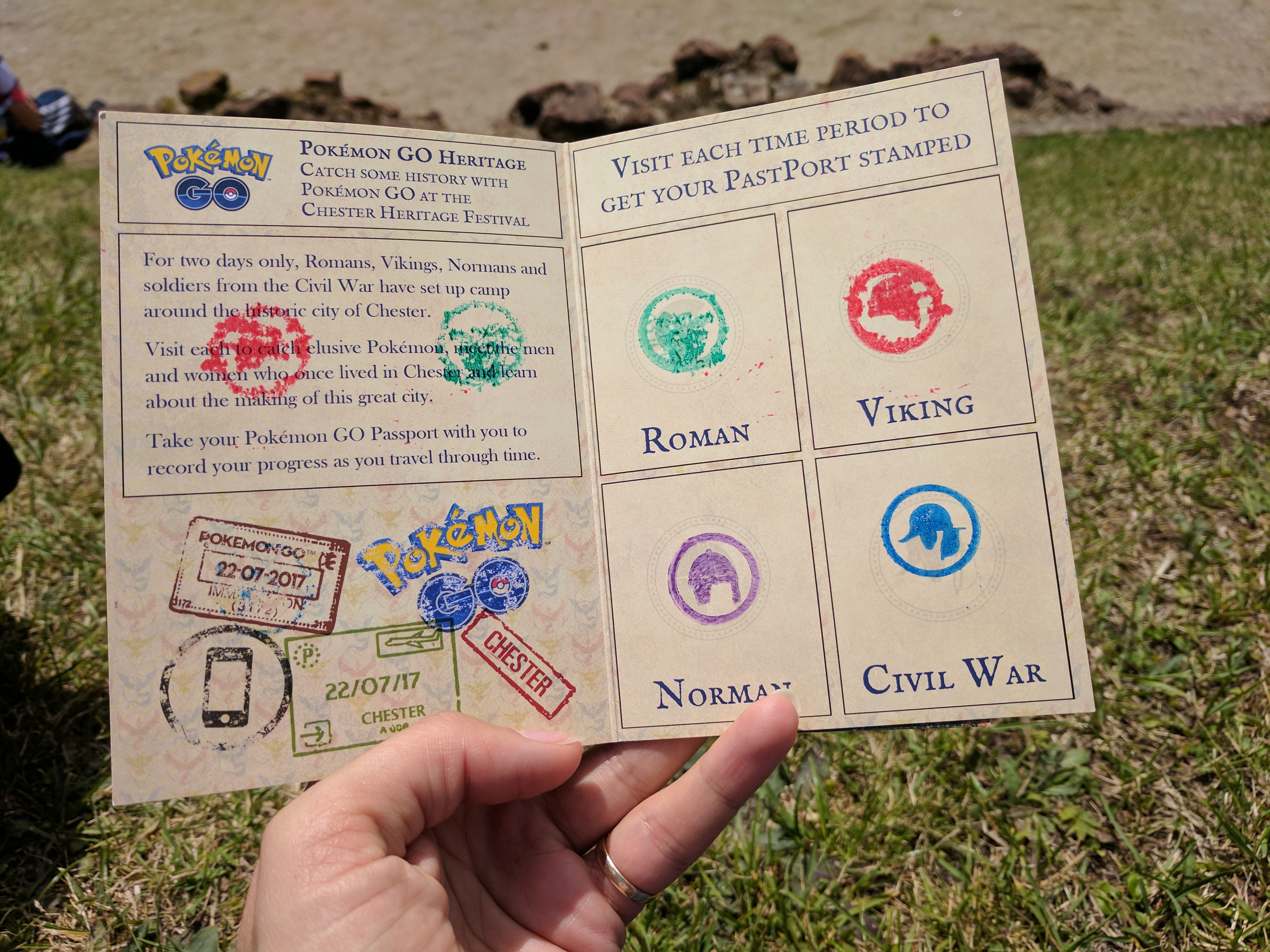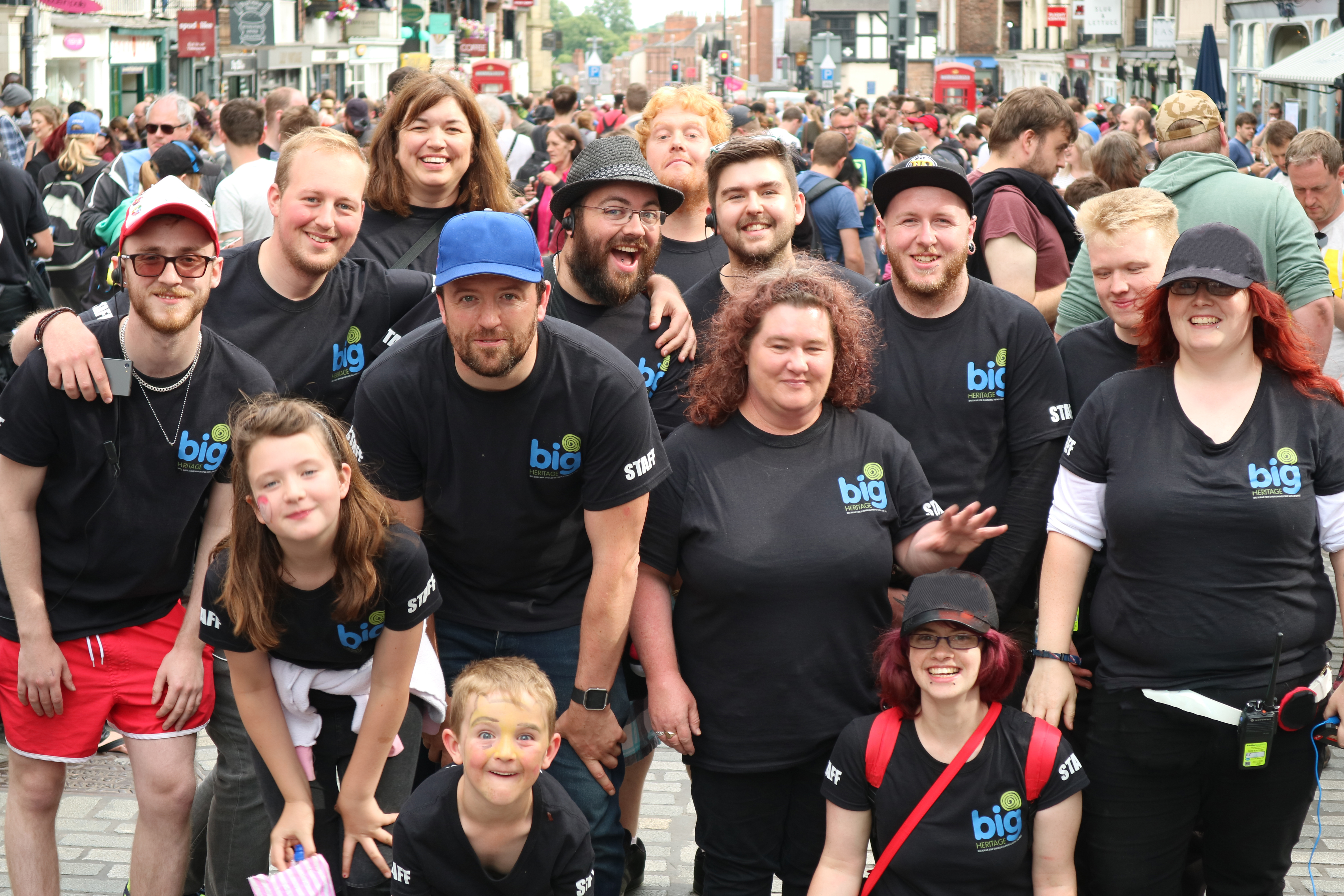Guest post written by Dean Paton, Founder of Big Heritage
Big Heritage is a heritage social organization based in the United Kingdom. They’re focused on engaging schools, communities, and museums with the past, and have hosted both events and educational programs promoting history learning with Niantic.
I founded Big Heritage in 2011 as a non-profit to encourage people to discover their own local history, and it was clear that Pokémon GO was also encouraging this sense of exploration. Our team started exploring how Pokémon GO could be used as a tool to encourage local history discovery on a greater scale, so we reached out to Niantic with our ideas and found that we shared common goals.
In 2016, Pokémon GO became perhaps the first truly global mobile gaming phenomenon. Everyone and their Grandma were outside in the fresh air, moving around and exploring their neighborhoods with a new sense of wonder. Myself and my 5 year old son, Eric loved the thrill of capturing Pokémon in new places, but it was during a visit to a very old place, that I realized that Pokémon GO encourages players to ‘stumble upon’ heritage. When we visited the 11th century Priory of Birkenhead, which is a short drive from our house, we were out to see which Pokémon we could capture. Despite visiting countless times prior, we enjoyed this particular visit with renewed vigour, as we were now not only exploring heritage, but trying to capture a Pikachu with a festive hat. We were not the only people playing on the site, and the game was clearly acting as draw to bring a new audience into this ancient site. It was fun to play alongside other people, while we all tried to capture the same Pokémon.
Fast forward to summer 2017 and Big Heritage collaborated with Niantic to ‘curate’ over 120 new PokéStops and Gyms in the 2000 year old city of Chester, all accompanied with historical information and images that were uploaded into the game. It meant that gamers were learning as they played, a subtle absorption of heritage through play. We organized a city-wide festival that fused history with Pokémon GO, inviting players to see history reenacted in workshops throughout the event... Over 16,000 Trainers attended the two day event, making it the biggest digital heritage event in the world, encouraging exploration, interactions across groups, and physical exercise
In a survey sent out after the event, we had a response rate of over 10%, giving us insight into what they did and didn't enjoy, what they feel heritage means to them, and whether they learned anything new while attending the event. Over 80% felt that they had learned something new about the history of Chester, with similar numbers feeling that the game was a great way to learn new things about the world in which they played it.
On one level, Pokémon GO is just a mobile phone game–but its impact runs much deeper. It used accessible mobile phones to ‘gamify’ the real world and encourage exploration. Whether culture enrichment is ever in the mind of Trainers is a moot point–people become better versions of themselves when they are exposed to different places, to art, to architecture, to heritage and to both the built and natural environment beyond their own daily sphere of movement. Pokémon GO encouraged this on a truly global scale.
So how do we build upon this?
Firstly–never change a winning formula. Pokémon GO’s success lay in the fact that it is first and foremost a fun game, based on a well known format. Big Heritage strongly encourage fun and ‘play’ in almost all of our work, as it is a powerful motivator.
Additionally, I think we can add a new layer of depth and engagement through the harnessing of advances in AR technology. AR allows us to almost remove the barrier of the screen that comes between players and the real world. With AR, the world doesn't become just a backdrop for playing games, it becomes an active agent within it. Future games could enrich player’s experience of their surroundings by ‘recognising’ the individual buildings or landscapes they are playing in through user-generated information or through already existing information such as Historic England’s building data sets or Google’s 3D maps of cities. As we begin to digitize our historic records, even historic residents of buildings could become part of our gaming world. Our phones could become our gamified Tardis, helping us explore not only the world around us, but with the people that once existed in the same space.
We are already working on new projects with our friends at Niantic, and appreciate how seriously they take some of our (often bizarre!) ideas on board, and share our common goal of encouraging people to enrich their lives through the power of gaming.
—Dean Paton, Founder, Big Heritage

